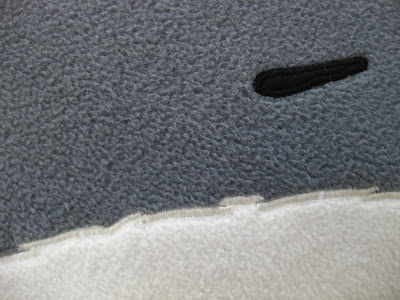After my five-day foray into the world of custom pattern drafting with the wonderful Dennic Lo, I have learnt so much that my brain feels like it will explode. In a tentative step to tell you about everything I discovered, I am starting with a baby step. Dennic showed us a really easy (and now I know it, obvious) way to sew perfect darts.
How do you normally sew darts? I am in the chalk camp. I mark the point with a white pencil (on the wrong side of the fabric) and the mid way points, and notch the raw edge where the dart ends. Then I draw the sewing line and pin carefully. This method works for sturdy fabrics (eg calico, medium weight cotton, denim). The drawback is that for slippery fabrics which distort easily, it is impossible to draw the line in the right place. The pressure of the chalk or pencil tends to pull the fabric out out of shape. So what to do?
This is the clever bit. Firstly, you don't need a pencil. Dennic showed us a tool I had never seen before: a bradawl, or an awl for short. It looks like a small screwdriver and all it is is a rod of metal that tapers into a fairly fat point--
This point is designed so that when you push it into fabric it pushes the weave open to create a hole. If you just press the hole with your fingers it'll close up. Notch the dart position at the raw edges. Then use a strip of card with a straight edge (cut one side wavy to ensure you only ever use the straight side). Fold your dart and match the notches. Line up the fold to the point, put it under the foot of your machine and bring the needle down so it doesn't move. Lift the foot of your machine, whip the piece of card towards the unfolded side of the dart. Check the notches are still matching, put your foot down and sew! Try not to sew through the card as this will blunt the needle faster.
You have a perfect dart without the trouble of pins and fiddly chalk lines!
Alix xxx
How do you normally sew darts? I am in the chalk camp. I mark the point with a white pencil (on the wrong side of the fabric) and the mid way points, and notch the raw edge where the dart ends. Then I draw the sewing line and pin carefully. This method works for sturdy fabrics (eg calico, medium weight cotton, denim). The drawback is that for slippery fabrics which distort easily, it is impossible to draw the line in the right place. The pressure of the chalk or pencil tends to pull the fabric out out of shape. So what to do?
This is the clever bit. Firstly, you don't need a pencil. Dennic showed us a tool I had never seen before: a bradawl, or an awl for short. It looks like a small screwdriver and all it is is a rod of metal that tapers into a fairly fat point--
 |
| A bradawl |
You have a perfect dart without the trouble of pins and fiddly chalk lines!
Alix xxx












.jpg)
.jpg)

.jpg)
.jpg)













































